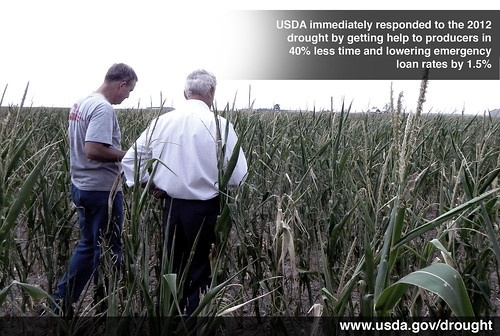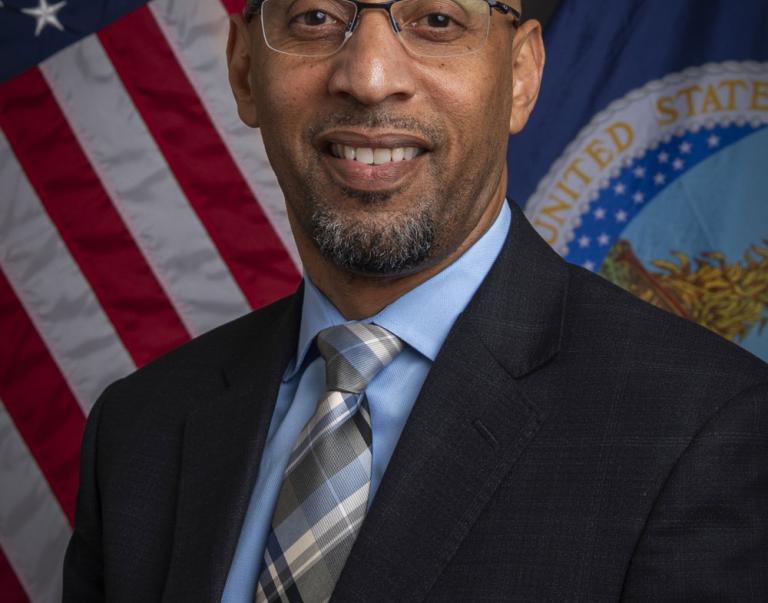
Visit www.usda.gov/drought for the latest information regarding USDA's Drought Disaster response and assistance.
This week, as drought conditions continued to expand across two-thirds of the lower 48 states, USDA officials began fanning out to rural communities across the country to show support to farmers and ranchers affected by the drought. As part of the effort, USDA Under Secretary for Foreign and Farm Agricultural Services Michael Scuse visited Indiana, a state now experiencing increasing levels of drought, as most of the state has been designated a natural disaster area by Agriculture Secretary Tom Vilsack.
During times of need, USDA has historically responded to disasters across the country by providing direct support, disaster assistance, technical assistance, and access to credit. USDA’s low-interest emergency loans have helped producers recover from losses due to drought, flooding and other natural disasters for decades. Last week, Vilsack reduced interest rates on emergency loans to 2.25 percent, providing a much-needed resource for producers hoping to recover from production and physical losses associated with this and other natural disasters.
As Under Secretary Scuse and I departed Ft. Wayne on the 18th and traveled west to a farm owned and operated by the FSA County Committee Chairman and his family, we knew immediately the day was going to be hot. By 8 a.m. it was 89 degrees. The Schaefers were an open and very welcoming farm family and had created “tent city” in the middle of a wheat field. The field fell next to a normal-year, 200-bushel corn field that the farm family reported would probably be a “0 yield” for 2012. Scuse shared information from USDA and encouraged those farmers in attendance to communicate with their elected representatives in Washington about their needs. He emphasized there is a great need to pass a food, farm and jobs bill to assist producers who currently have no disaster assistance to help them with their drought-stricken crops or stressed livestock.
We then headed further west toward Idaville, and were informed that a strong gust of wind had blown down the tent site. Like any good rural community, we came together to repair it quickly. The travel on a dusty, gravel road provided the lead up to an extremely poor corn crop that lay adjacent to the drought tour site. Acres and acres of corn that were brown, rustling, “fired” from the root up into the stalk surrounded the tent. It was a devastating sight.
The following day, Scuse met with all 355 Indiana Farm Service Agency employees, thanking them for their work on the front lines during this extreme situation, and listening to their thoughts and concerns about moving forward. It is clear that everyone is united in helping in any way that they are able.
We then traveled down I-65 south of Indianapolis and were received by a family farm owned by seven generations of Kelsays. The hospitality of the family, who own 500 head of dairy cattle, was overwhelming. Dozens of local farmers came out to visit with Scuse. Following his remarks, he and farm owner Merrill Kelsay toured the livestock barns and milking parlor.
At all three stops, we saw some heartbreaking things. There is no question that our farmers and ranchers are hurting. But we also heard a story about the resiliency of American agriculture. And as part of USDA, I know that we will continue to stand with our farmers and ranchers, and provide whatever assistance we can to sustain and assist our rural communities.


